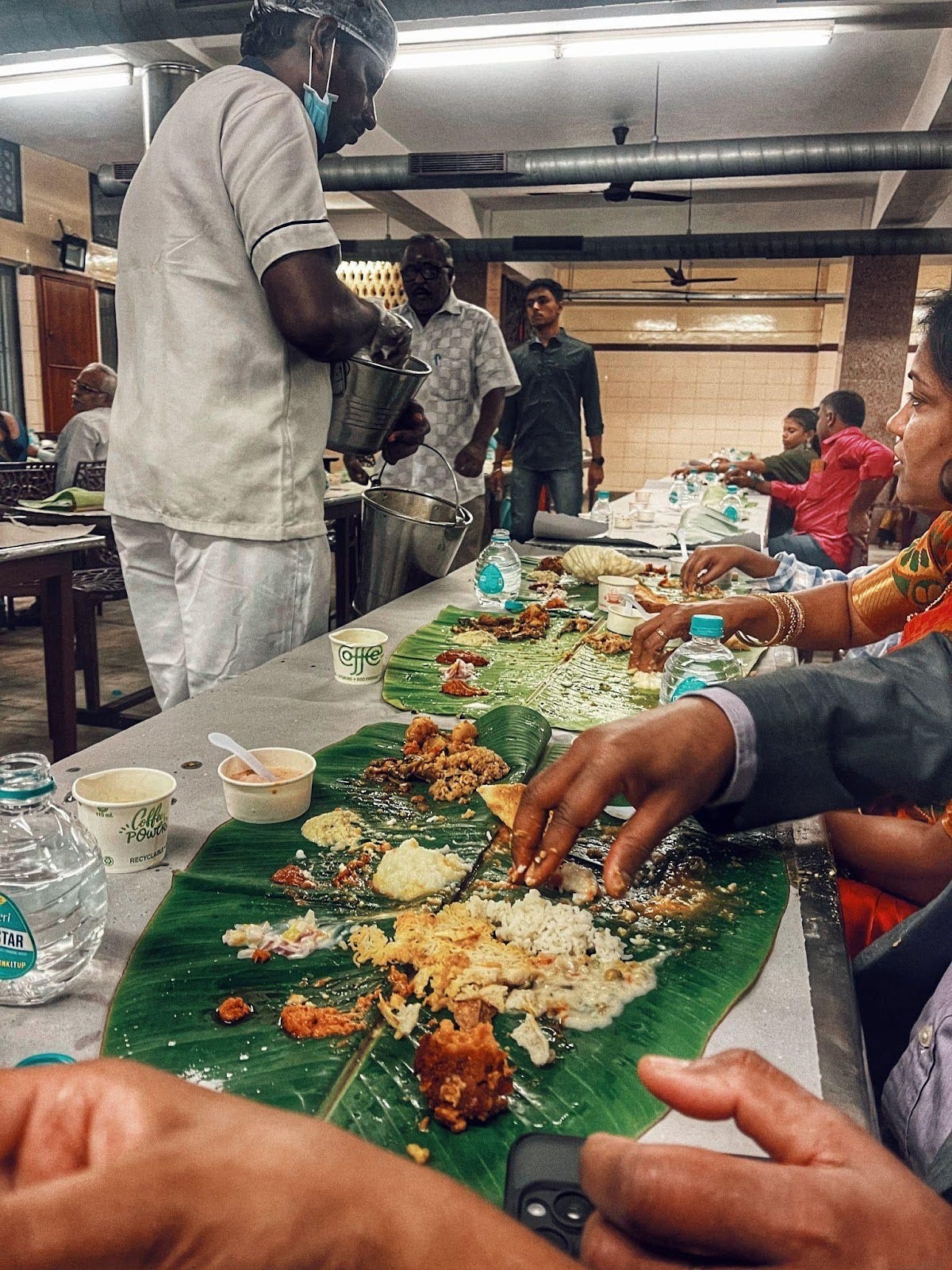A Guest’s Guide to the Tamil Wedding Feast (Virundhu)
How to navigate a 23 course meal in India with splash zones and three thousand people.

With some auspicious scheduling, my family and I flew to our South Indian motherland to attend three Tamil1 weddings over the span of 8 days: two of my first cousins’ and one dear family friend’s. Those familiar with Indian weddings know this triple threat of multi-day festivities was packed in duration and attendance (3000+ people).
What I didn’t conceptualize, having not been to a proper wedding in India in years, was how much emotion and drama was wrapped up into the food that would fuel this fervor. Virundhu: the name of this type of feast in Tamil, can be translated to a meal that is both well prepared and well enjoyed.
Each marathon of a ritual-packed day, we were corralled by eager family members every few hours to the basement of the event hall, affectionately and functionally called the ‘mess’. First, we were led to a room with a basin and multiple faucets lining its perimeter for soapless hand rinsing. Then, once we passed that stage, the room opened to pandhi-style seating: paper-lined Olympic-lap-long tables dressed with open banana leaves, spread wide and green with barely two inches between them, and seats beckoning diners even closer.
Imagine this: the second you sit down, rubbing shoulders with neighbors on both sides, hands still wet, you’re overstimulated. The leaf is open, with just a white crystalline powder, a square beige cake, and radioactive orange oil dotting the corners, and before you can register what they are, a consecutive series of seven men with pails quickly plop various curries and porridges, one after another, Jackson Pollock-style, onto the bare leaf as you fight with inertia to keep them from running onto your sari-clothed lap.
“Eat!” an auntie cries.
It took me 4 corrallings like this until I finally could recognize patterns in what was happening in a virundhu. The chastising of my cousins for the way I was bumbling around, trying to interpret the onslaught served, began to make sense.
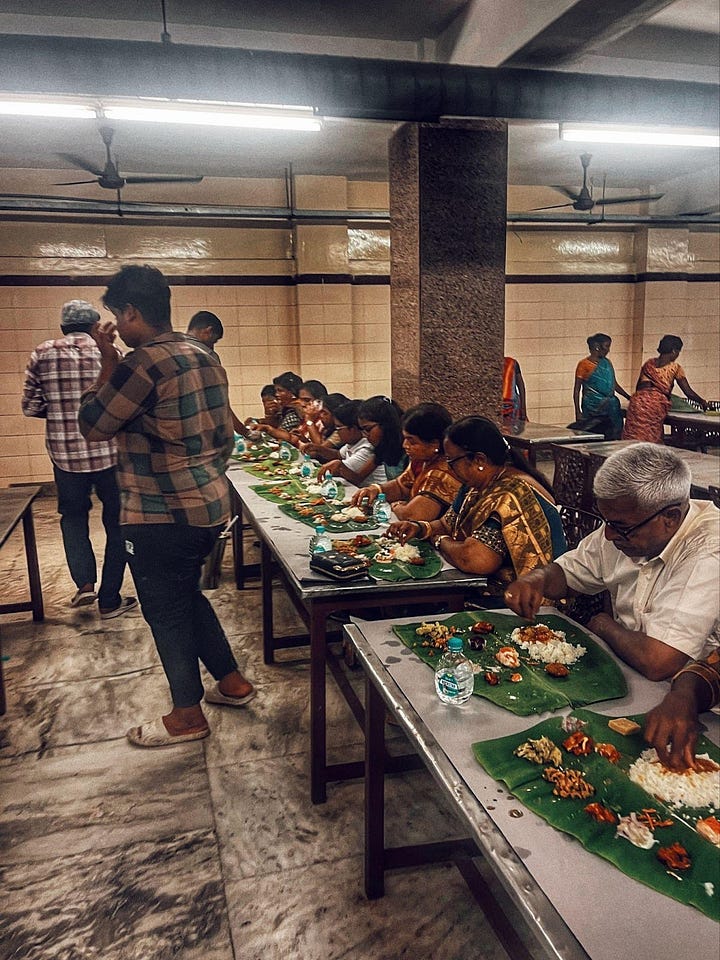
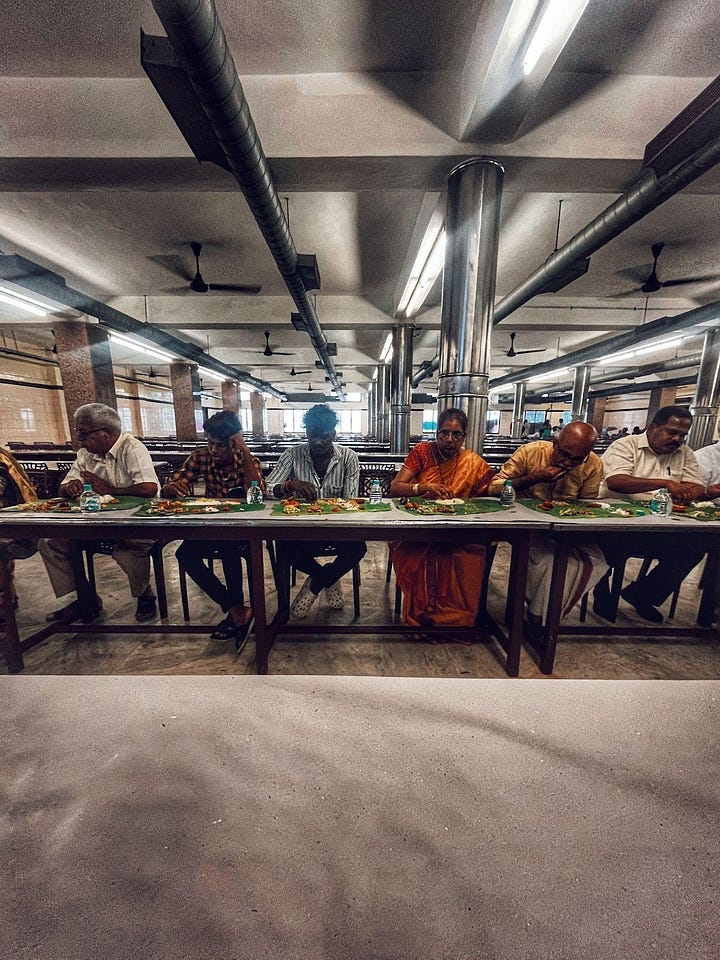
Setting Tableware: Elai and Your Hands
The banana leaf (elai) itself is about a foot long and always placed with the tapered end on the left. The right hand is always for eating and gifting, so the leaf is positioned with most of its surface area to accommodate this. The left hand, as in many Asian cultures, is of course for washing the butt.
The banana tree is sacred to Tamils and South Indians, as almost all parts of it are used in some capacity (more to come!). But perhaps its greatest use is preventing a dishwasher from needing to hand-scrub some 3,000 plates from an event – the task is to clear and compost, instead.
The meal begins by drizzling a bit of bottled water (Bisleri brand is iconic for out-of-towners with weak stomachs) on the elai, because often, the fresh-cut leaf’s last wash was the tropical rain.
“Elai touching the food helps you absorb iron,” my doctor aunt tells me, and it seems to be the case that polyphenols, fiber, and antioxidants await its eaters. The aroma of the leaf itself, when steaming under one of the various warm porridges, is green and slightly fruity. Using your hands to eat off of the elai - the fruit of our thorough washing stage at the beginning - gives a bit of tannic tang to the bite as well.
That astringency is not an afterthought, but rather, the very structure of the abstract palette slopped in front of us. In fact, the driver of all of the variety - 23 different elements placed on one elai in the photo above - is called arusuvai.
Derived from aru, meaning six, and suvai, meaning tastes: this Tamil word predating Greek and Latin refers to a well-rounded experience having sweetness, sourness, saltiness, pungency / spice, bitterness, and astringency. I use the word ‘experience’ vaguely; this idea was explained to me emotionally, both in food and life.
Each taste carries a sentiment with it, and in doing so, the need to have all of these tastes on the elai is mandatory at a life event to set the tone for the future, like a wedding.
Amuse Bouche: Salt, the Opener Sweet, Oorga
Remember those three obscure characters sitting on the elai at the start?
Salt (ooppu)
a little milk or nut-based sweet to open the meal, like cashew katli
tangy, fermented pickle (oorga), often mango imbued with mustard seed, chilly, and turmeric, seeping bright scarlet into the elai. Perhaps a little raita - onion and yogurt relish - too.
Salt, sweet, and sour, astringent, bitter, pungent, all before you even sit down, to prime the palate. An amuse bouche, in fine dining lingo - both acting as stimulants to begin the feast and a tuning for the seasoning of the entrées to come as to your own personal taste.
Desserts: At Least 3
A second round of richer sweets (at least three different varieties) are often served early in the elai as well, eaten in beginnings, interludes, and/or ends of digestion. To name just a few: milk and wheat-based truffles steeped in rose and saffron syrups & creams (gulab jamun, shahi tukda); ghee-laden taffies of kaleidoscopic colors (barfi, halwa); mangoes dried into painstakingly-layered cakes of fruit leather (aam papad).
You may recognize some of these. These desserts aren’t indigenous to Tamils; they’re adapted from our Northern Indian neighbors, riffed on with twists and styles, but widely beloved throughout the regional cuisine diversity of India, like chocolate chip cookies in the US.
When my uncle noted in wedding #1 that most people didn’t finish their 5 sweets, a town hall was called amongst our family. He, a businessman, argued we should keep all the sweets in a separately standing stall on the side of the mess, people could take what they want, and we could then donate the excess to prevent food waste. For 4 hours, every traditional, liberal, and Green party streak within my relatives was brought up in a heated Tamil debate on whether leaving sweets off of the elai would be inhospitable and preordain the couple for a life without joy. After lengthy negotiations, they landed on a compromise: leave the opener sweet on the elai as normal, and let people pick up the rest to their desires. Some relatives still groaned.
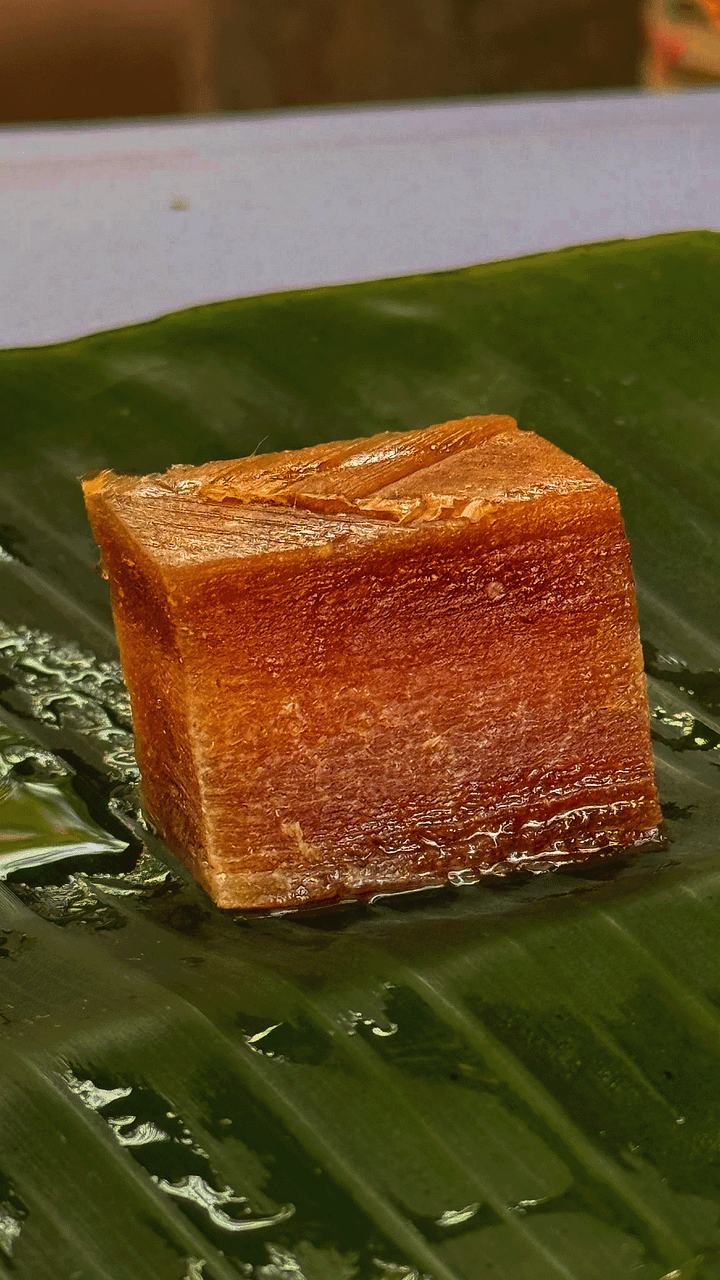
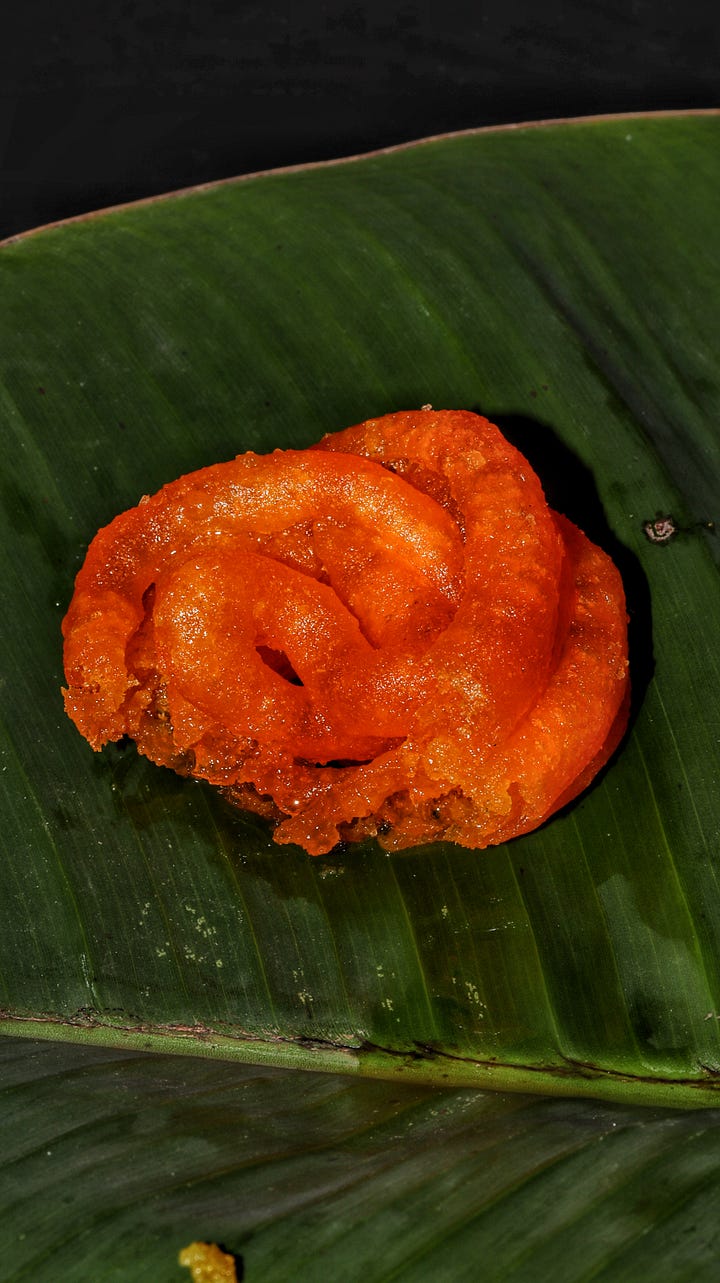
Appetizer: Appalam, Bajji, Thovayils, Chutneys
There is a surprising amount of food thrown onto the bride and groom by each other and family during the marriage rituals, in full glam. Your hands will smell like onions at the end of eating the virundhu, but the newlyweds will find raw rice and lentils in their hair for the next month.
Readily available comic relief for the tension of in-laws and the occasion, food’s prominent role in these rituals feels like Tamil culture’s way of acknowledging our everyday rice and lentils as part of our lifeblood.
In any virundhu, and in many ordinary Tamil meals, you will likely see appalam – often Northernized or Westernized as papad or poppadom – a thin, popped crisp made from rice and urad bean that resembles chiffon suspended in the wind.
Around six appalam, from the very same batches prepared for the virundhu, are taken for a particular wedding ritual, in which the bride and groom loudly shatter them over each other’s heads, in a symbol of what to do with the everyday frustration or problems that come to them. They can’t help but laugh as they’re covered in a shower of appalam confetti.
Along with appalam, early bites to start the savory courses include other crispy items made with our legume lifeblood, like chickpea flour-battered fritters of potatoes or plantains (bajji). To dip, you’ll be often provided with tangy chutneys and thovayil – a thicker, chunkier cousin to chutneys, in which the star ingredient is, again, ground urad beans.
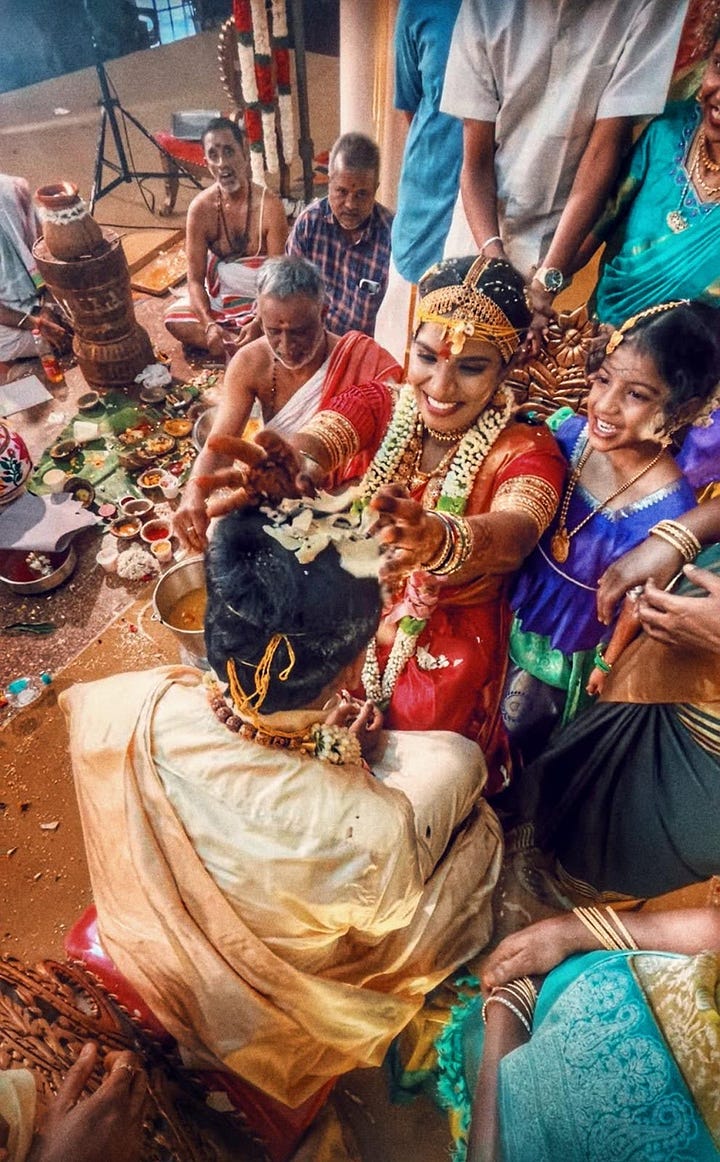
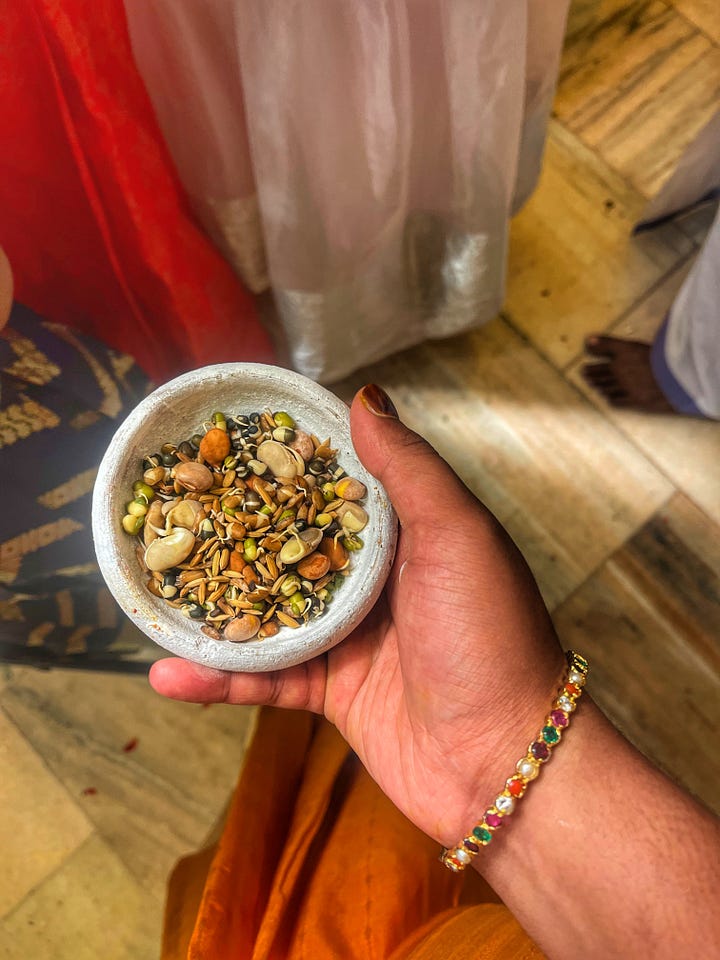
Entrées: Rice-based Dishes, Curries, and Vegetables
With all this lead up, the truth is, my mother even calls these entrées ‘ordinary food,’ as they are often just the heart of everyday Tamil home cooking: more hearty rice and legumes, many ways.
Often for breakfast virundhu, but also served at all times of day, iconic South Indian rice-lentil dishes include:
idli, white, palm-sized rounds of steamed, fermented rice-urad bean batter
dosa, ‘pancakes’ made over a griddle with the same batter as idli
uttapam, thicker dosas seasoned with onions, curry leaves, and mustard seed
idiyappam, vermicelli tangles, often served doused in coconut milk
upma, a rice and chickpea or urad-bean porridge
There are at least five types of curry-esque liquids to serve alongside these dishes, or over rice, or with chapati / paratha / poori (the Tamil names for different preparations of roti, or wheat flat bread, whether dry cooked / layered / fried):
sambar, a translucent vegetable-pigeon pea soup often jazzed up as “kalyanam (marriage) style” with eggplant, unripe mangoes, pumpkin, okra, etc.
kootu, a chunkier stew of mung bean, chickpea, pigeon pea, or field bean dal and gourd vegetables
kurma, probably the most directly translation of ‘curry’, and a general name for a lighter, thinner, vegetable and coconut-based soup
kuzhambu, or often, kara kuzhambu, a richer, fattier, spicier, darker stew made with plenty of garlic
rasam, a transparent, deeply umami broth made from tomatoes, cilantro, and black peppercorn, often drunk or eaten with rice at the end for digestion.
Mandatory sides to round out the above include:
poriyal, vegetables stir-fried with roasted lentils
varuval, starchier, softer vegetables pan-fried after being marinated in spiced oil
thayir or mooru, yogurt or seasoned buttermilk
Meat is usually absent at this type of feast, in respect to the life of the animals that helped the rice, vegetable, and pulse-growing farms Tamil families historically thrived on (and likely, also, for cost).
If not the dishes themselves, the specialness of the virundhu comes from the sheer variety the hosting family offers, saying, “come, eat how you’d like, rejoice in this abundance of celebration we’d like to share”.
It was fascinating: the scale of serving 300 people at a time, through these highly efficient, comically impersonal men with pails. As I watched dozens of courses accumulated on my elai and even more in pails went by, all without a menu, I wondered, how much would this meal have cost in the US?
The feeling, significance, and intention of this food reminded me of my time working in a kaiseki restaurant. The Japanese ‘fine dining’ meal, often spanning over twenty courses (and costing on the order of $500+ in the US), is meant to celebrate the seasons at their peak and the harmony of sharing energy with them. These courses are cleanly, peacefully plated, in ritualistic formats, and served in small-scale settings in pottery chosen specifically to synergize with the dish. Kaiseki’s roots are tied to the cuisine of Buddhist monks who pioneered meatless menus (shojin-ryori), to serve people without harm to other lives, much like in the virundhu.
How different, yet how similar, these cuisines and heritages are. I feel Eurocentric trying to translate its many parts into neat categories of “courses” in the French vocabulary we’re used to; to put a price tag on the immense intentionality and ceremonial spirit in every set of hands that came together to produce the meal; to both look down upon the white tablecloth-less style of service as impersonal or unrefined and, at the same time, exoticize its luxury such that if this concept did indeed come to the USA, it would likely only be found in the hands of those with a lot of money. Virundhu feels noteworthy because it does not fit neatly into our existing, prevailing notions of ‘fine dining’ -- its value, like that of many cultural heritages, feels both incredibly special and shareable.
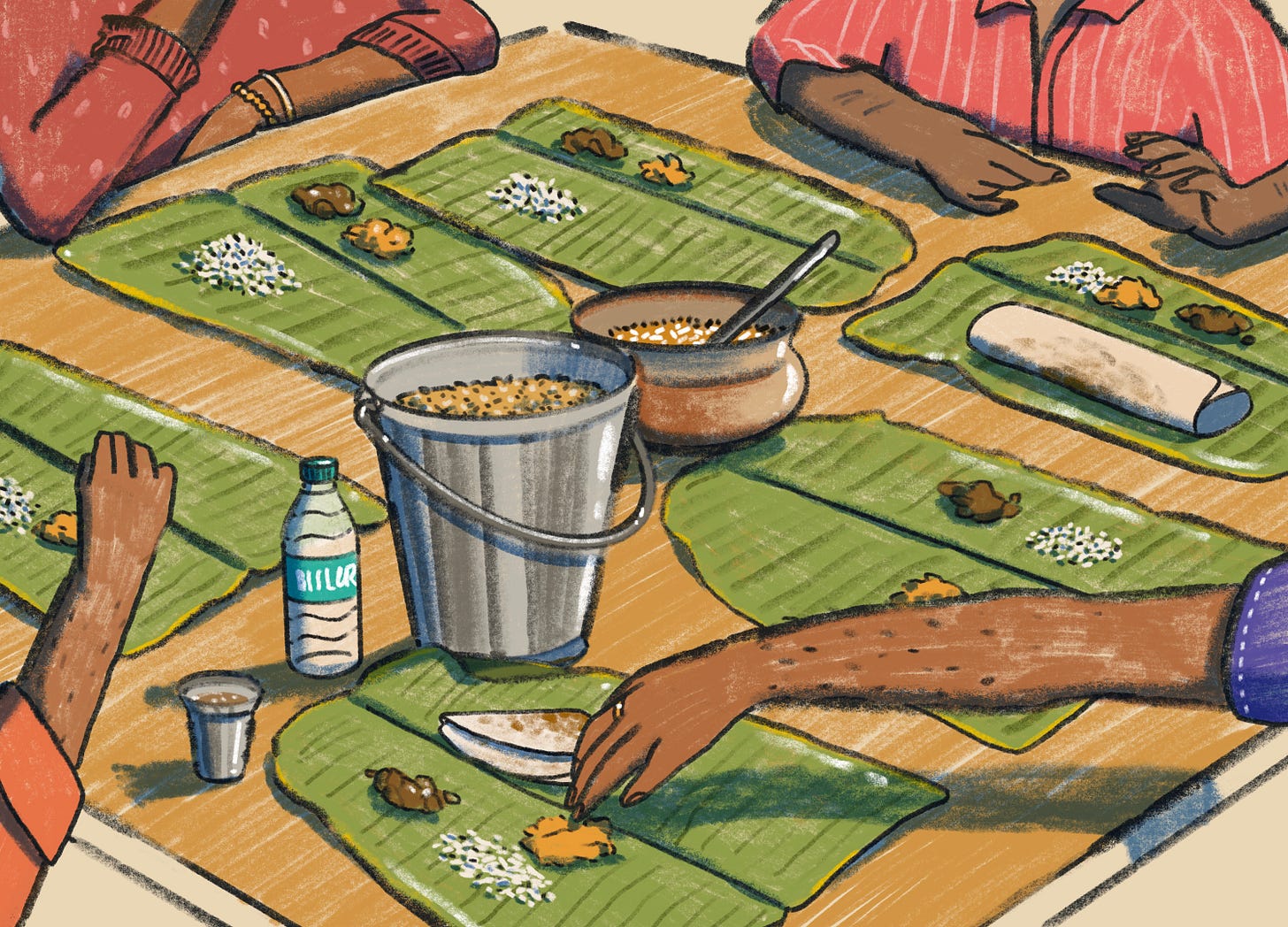
A trope that comes up in our existing American discourse of “Indian food”, is the reductive division into a popular ‘North’ (think paneer tikka and butter chicken with naan bread) and lesser known ‘South’ Indian cuisine.
While the prevalence of wheat in the former and rice in the latter can be a helpful axis to begin to understand India’s geographical agricultural differences, in a population of 1.2 billion and 120+ languages, language can be a powerful key to understanding the heart of the cuisine of a sub-region. Take brinji elai foods, “made with bay leaves”: a Tamil category of garam-masala-seasoned curries served alongside parathas and pooris. These wheat-based breads and spice profiles may seem, at face value, more readily as ‘North Indian’--but they are often served as a specialty in Tamil virundhu.
The idea that a food is ‘indigenous’ is often not true: even a food that feels quintessentially Tamil, like idli, may have been inspired by Indonesian steamed rice cakes, kedli, shared by traders as early as the 8th century, according to T.C. Achaya, scholar of Indian foodways. What we really celebrate, then, is the variety and emotion we create from these things, the “decoloniality” of taste not having one perfect, platonic ideal-- says Krishnendu Ray, professor of Indian Food Studies at NYU.
Wedding feasts, let alone everyday foods, go by slightly different names and procedures depending on who you ask, inspired and shared throughout history. The diversity of central, Eastern, and in-between regions of India are even unknown to Indians from the poles—for example, I doubt my grandma has tried Assamese food, from the bordering region of Bhutan, but I hope we can learn more at baseline as our generation mingles farther from our homelands.
Within Tamil Nadu (the southernmost state of India, where Tamil is the mother tongue) itself, vestiges of caste differences exist: Brahmins, Gounders, Palakkad, with familial traditions and lines of respect that still may not be crossed out of fear. These groups may do things differently on and off the elai, but an invitation to the wedding is an invitation to a democratized feast. In pandhi-style seating, everyone rubs shoulders and eats the same items together, all under the mercy of the men with the pails: your house help, drivers, neighbors from a different part of town, rich government officials you’re a 4th cousin of, screaming children, grandmothers who can’t use the restroom alone. Even the men with the pails and the cooks of the event eventually sit down to take part in the feast. That feeling of looking around the mess, filled with different walks of life after all the messes of the day, is something that I couldn’t help but feel love for, and is something I want to embody as part of the Tamil diaspora. It’s the same energy that fills the plastic tables of hawker food stalls in Singapore, with signs in both Tamil and Mandarin; the Michelin tables of Semma and Copra across America; and the verse of one of my favorite Tamil song, “Baleilaikka”, by A.R. Rahman:
Pakkathu veetukum Sethu samikira Anbu ingu vaazhum
The love of cooking for your neighbor alongside yourself thrives [in Tamil culture].
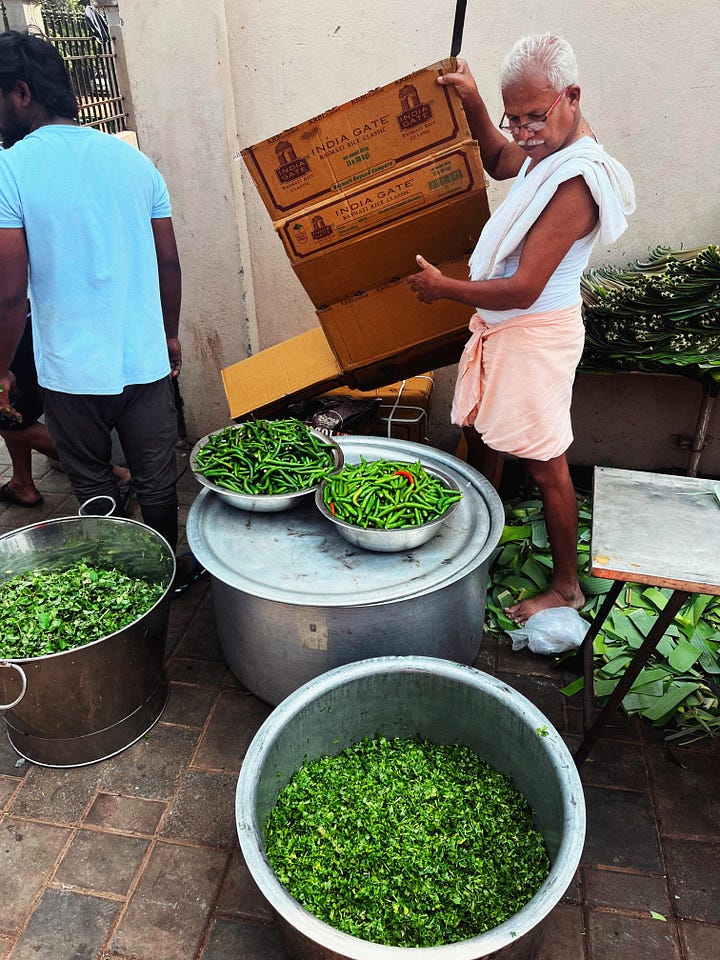
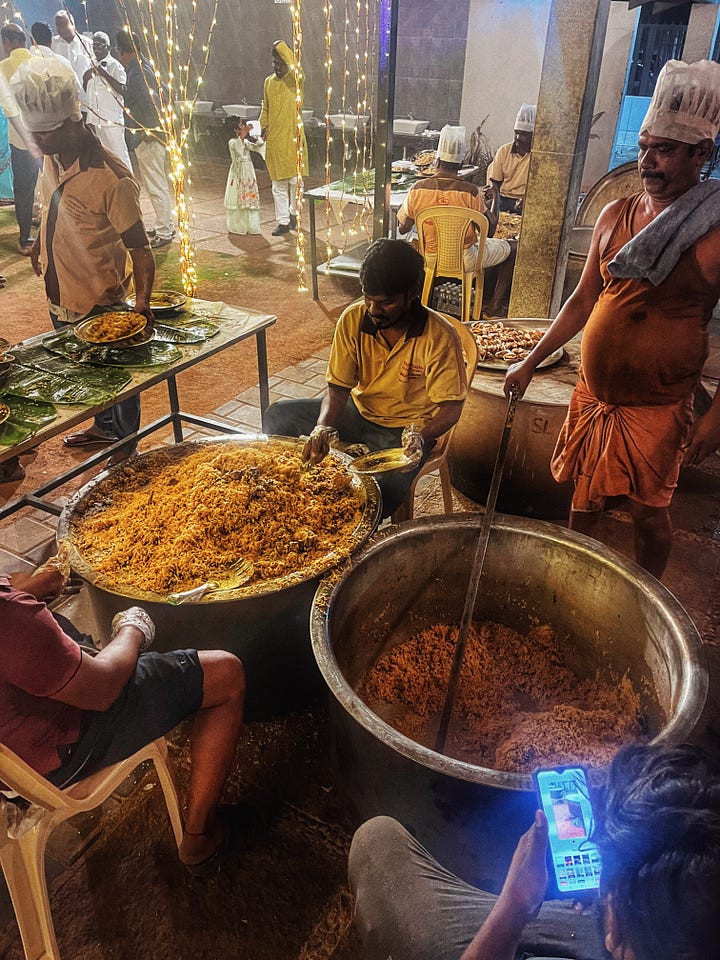
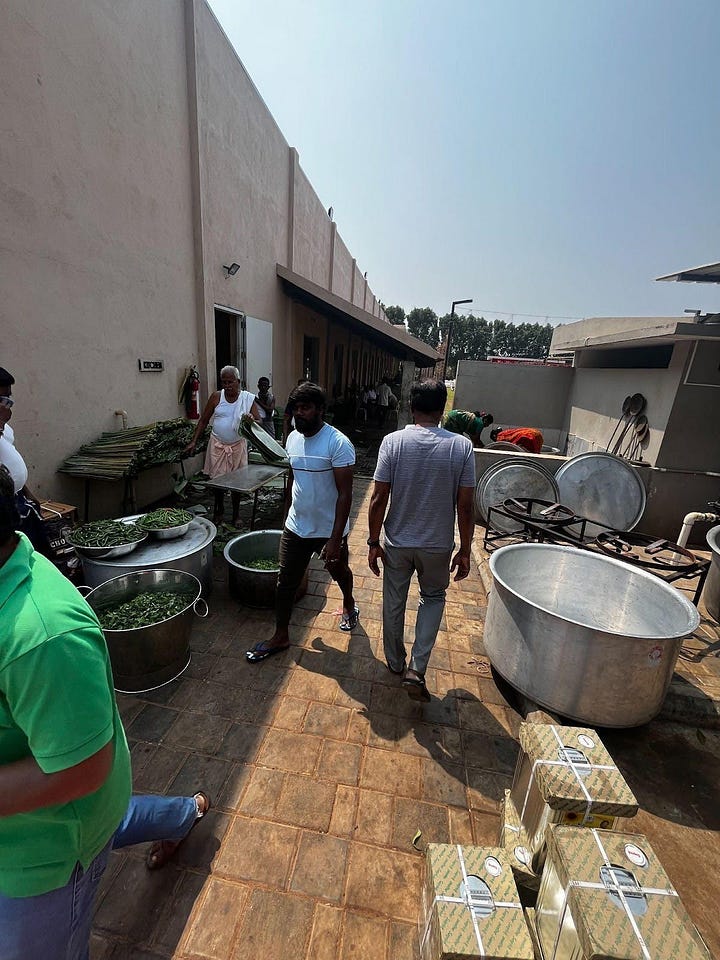
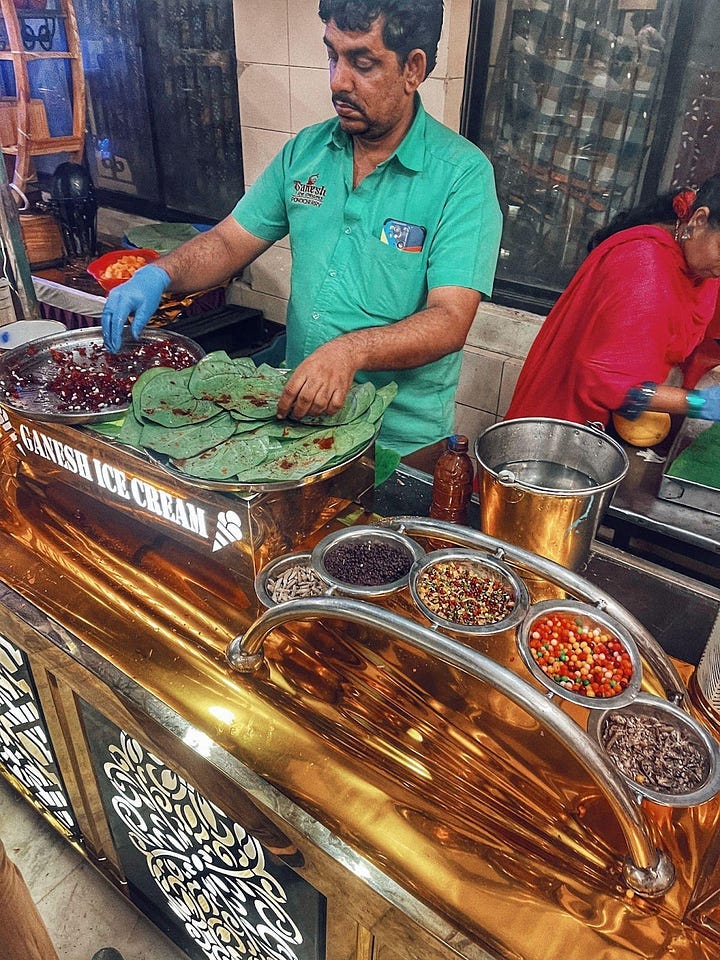
Digestif: Leave Leaves and More Leaves
At the end of the meal, whether or not you’ve made a dent in your 20+course spread (in fear of saying no to the men with pails), you’ll be instructed to fold the elai closed towards you: bring the top half of the leaf to meet the bottom half, along its middle stem.
You will get yelled at if you mess this up (speaking from experience). The thought is that you want to welcome more happy events like this in your life. In turn, when fed at funerals, you close the elai away from you.
Then, you’ll get up, leave your leaf to be cleared, grab a paan to chew on your way out (betel leaf-wrapped digestives like candied fennel, coconut, clove, rose jam, and camphor), say thanks, and wash your hands, again, soaplessly.
I wish you fullness, six tastes and emotions, and the courage to embrace the multitudes of slop on an elai soon.
This piece was written by
. Based in New York City, USA, Sangita is likely making a matcha latte at any given moment.Tamil is a language and resulting regional cultural group of South India and Sri Lanka. In popular context, Semma, the NYC restaurant famed for becoming one of the first South Indian restaurants to receive a Michelin star in 2022, is headed by a Tamil chef, Vijay Kumar.
Liked this piece? Let us know your thoughts!
Funny Table is an independent food publication and video channel dedicated to teaching you more about what you eat. We’re a small volunteer team committed to telling stories that reflect the diverse voices, cultures, and communities that shape what’s on our plates. Every share, comment, like, and subscription helps us keep going.
Enjoy educational media and stories about food? Check out our videos on YouTube and Instagram for more.






